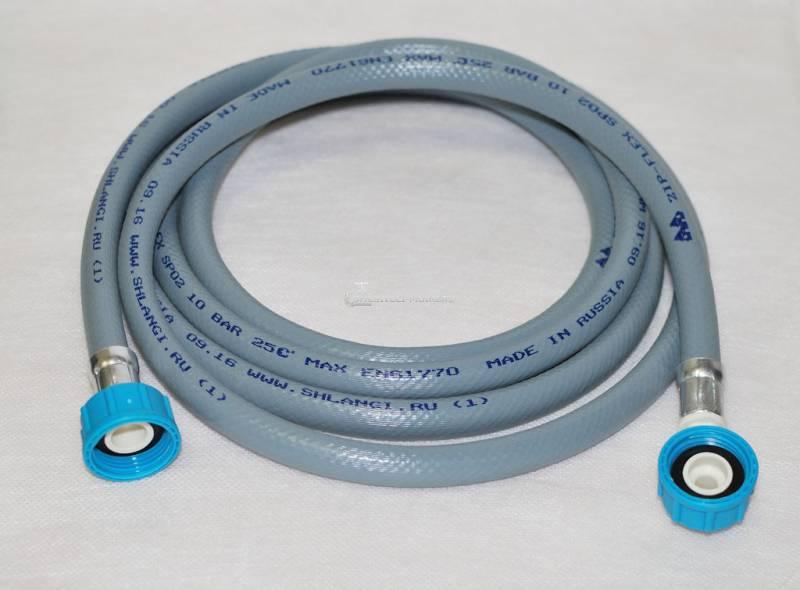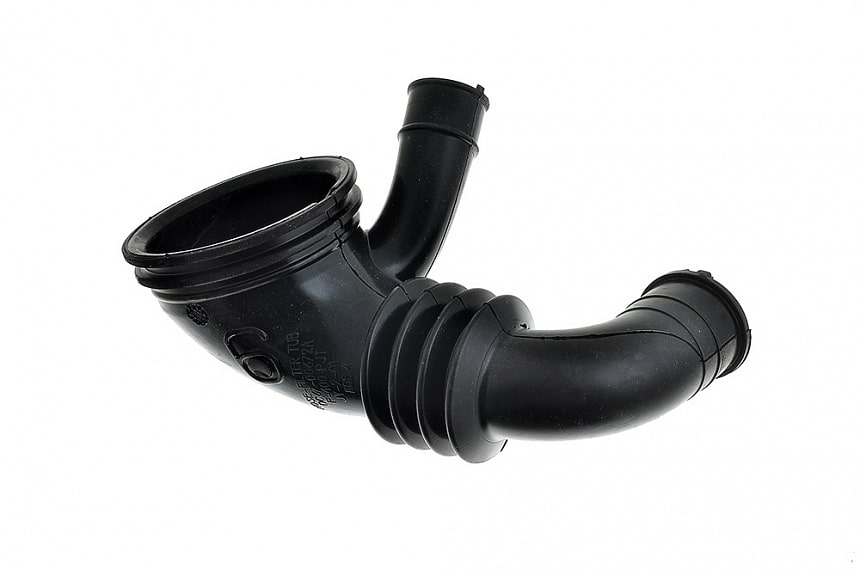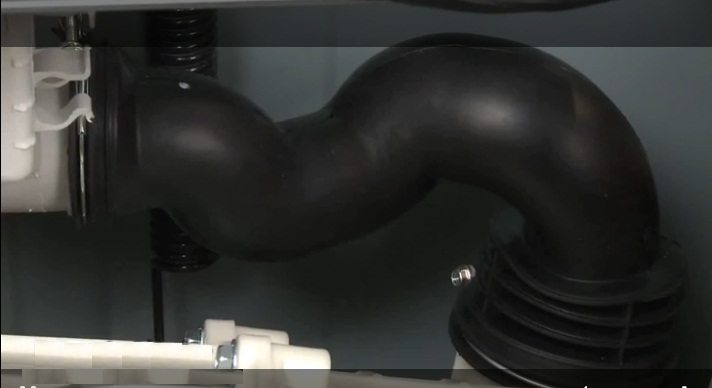 Anyone who has a modern washing machine is well aware that during the operational period, working systems are subject to periodic cleaning. However, few people remember that the pipes for washing machines also need to be cleaned. And here the concepts should not be confused - the hoses are located outside the device, and the pipes are mounted inside, and many owners learn about their presence only when water begins to flow through these parts.
Anyone who has a modern washing machine is well aware that during the operational period, working systems are subject to periodic cleaning. However, few people remember that the pipes for washing machines also need to be cleaned. And here the concepts should not be confused - the hoses are located outside the device, and the pipes are mounted inside, and many owners learn about their presence only when water begins to flow through these parts.
You should not bring household appliances to this state, and we recommend taking into account useful tips on how to repair or replace the pipe. True, first you should understand which pipes are installed in the washing machine.
What is a pipe?
This is a corrugated piece of hose that is used to connect the inlet and drain holes to the corresponding points in the laundry washing machine. The pipes, unlike hoses, are located in the body part and are not visible to the user. Some people don’t even suspect that such elements exist in the washing mashine. As a rule, the first acquaintance begins after the washing mashine leaks.And here inexperienced users begin to make the main mistake - they are looking for something to glue the pipe to the hose or tank.
Types and location of pipes
Suppose you own a modern washing machine, and it makes no difference what brand it is - Kandy, Indesit, Ariston, Electrolux or Atlant. Each model can be equipped with up to three different pipes:
- aspic;

- drain;

- dispenser.
Each element is distinguished by its coordinated work; liquid moves between them. Now let's figure out how this process happens.
The filler pipe is used to connect the intake valve and the SMA dispenser. The liquid moves quickly through it, enters the tray for washing powder, dissolving it, and in the form of a mixture passes into the dispenser hose, which connects the tank and the tray. Through the pipe, water enters the tank, after which the washing process begins according to the mode you set.
As it becomes necessary to drain the waste liquid, the drainage pump is activated, pumping water from the tank into the drain pipe. After passing through the entire drainage system, dirty water goes into the sewer. It follows that each of the three pipes is capable of losing its functionality prematurely due to the formation of scale inside, blockages or mechanical damage.
In modern washing machines, the pipes are made of durable and elastic material, but after a long period of use they harden and can crack, causing leaks. It’s also a shame that residue from the remnants of low-quality powder collects and hardens in the dispenser hose. However, the drain pipe suffers the most vulnerability.This is due to the fact that waste liquid passes through it, which may contain small foreign objects - cufflinks, pins, buttons, etc.
And if your washing machine leaks, you must first make sure that the drain pipe is not damaged. After this, all that remains is to repair and change the filling and dispensing pipes.
Changing the drain hose in LG and Samsung washing machines
In machines from such companies, the pipes through which water from the tank passes into the pump are located at the bottom, and access to them is quite easy.
To replace this element, the washing machine should be tilted on its side. To prevent water leakage during repair work, it is first drained, for which the machine is switched to the spin-out and drain mode. After this, the cover of the filter element opens and the machine is completely freed of liquid.
Now washing machines from LG and Samsung are disconnected from the electricity and water pipe, the inlet pipe is unscrewed. The machine is laid on its side to gain access to the rubber hose. You will have to perform a certain algorithm of actions, for which you will need pliers and a Phillips screwdriver:
- the clamp opens and the hose is disconnected from the pump;
- Now we loosen the fastening that secures the hose to the tank;
- The pressure take-off chamber is unscrewed from the top of the tank. This is necessary in order to easily remove the clamp located on the pump;
- a new hose is installed, all steps are performed in the reverse order.
How to replace the drain hose on an Electrolux SMA
The repair process is more complicated because this requires removing the back panel. You will have to act in the following sequence:
- the top panel is removed;
- the bolts securing the fill valve are unscrewed, you can completely remove the hose;
- Now remove the back cover;
- The drain replacement process is performed as described above.
Having completed the repair, we connect the machine to all systems and perform a test wash.
Changing the hose to Bosch
On a device from this company, you will have to remove the front cover and dismantle some of the elements of the control panel.
- drain all the liquid from the machine, remove the tray for washing powders;
- disconnect the rubber cuff;
- unscrew the bolts of the front panel, disconnect the wire going to the locking device, remove the cover along with the loading hatch;
- the steps for replacing the pipe are similar to repairing the SMA from Samsung;
- We check all the work, assemble the washing machine, and test it by starting it up.
Repair of the tank pipe intended for water intake
In order to make sure that the fill valve is working, you need to get to it. The easiest way to do this is through the top panel of the machine. To do this, a pair of screws holding the cover are unscrewed, the element is moved to the rear wall, lifted and removed.
In front of us on the left in the corner there is a pipe made of rubber material connecting the fill valve and the body of the powder tray. Its ends are clamped on each side with steel clamps. To check, the pipe will have to be removed.
To do this, use pliers to loosen the clamps and move them to the center of the pipe. They can be used a second time, so there is no need to break the fasteners.
Carefully, but with some force, pull the filling pipe from the valve and from the outlet of the powder receiver. We inspect it for blockages and various damages.The pipe can be cleared of blockages using a plastic brush. After this, the part is washed and installed in its place.
If there is damage, it will not be possible to seal the pipe; you will have to purchase a new analogue suitable specifically for your model, install it and secure it with clamps.
Repairing the dispenser pipe

And this element periodically requires cleaning or repair. First, let's figure out where it is. In certain machine models, it is removed in the same way as the filler element - through the top of the washing machine. But there are units in which the dispenser pipe can be dismantled by first removing the front cover of the machine.
The clamping screws securing the pipe are unscrewed, which is carefully detached from the tank and dispenser. The element is inspected for blockages and other damage; if necessary, it is replaced with a new part.
In words everything is very simple, but practice proves that getting to the clamping screws is quite difficult. It should also be remembered that many machines have a flow filtration mesh on the tank neck. During dismantling of the pipe, it may fall out, and quite often they forget to put it back in its original place.
Useful tips
In order for all systems to operate smoothly, it is recommended to regularly maintain them and correctly place the water intake and drainage hoses. They are located in such a way as to eliminate bends along the length, leading to damage to the element and the appearance of leaks. Particular attention is paid to the drain hose - it is placed above a certain mark, which is indicated in the instruction manual. It is believed that the hose is not placed above the top point of the body of the unit for washing clothes.
For areas with threaded connections, grease should be used, which increases the service life of these areas. Try to ensure that there is no moisture in the threads, which can cause corrosion and damage metal elements.
It is recommended to clean the filter installed on the inlet from time to time. During operation, this is where the most dirt and various debris accumulate, which contributes to the ball sticking in the pipe. By removing such blockages, you increase the life of your washing machine.
If you do not have enough experience in performing plumbing work or do not have the necessary knowledge, then it is not recommended to independently connect the washing machine to the water pipe.
Incorrect actions can cause pressure loss in the system, water leakage, or damage to the washing machine.









